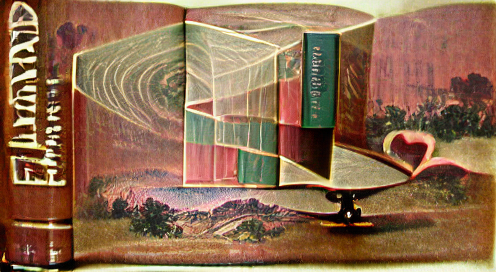
The argument for multi-dimensions is a beautiful one because it leaves most of the argument to the audiences’ imagination.
Take a single point. Not an inkblot on a page, but a single pixel of our universe coloured in. There is no side to this object, no front - you and I cannot even see it! This is the land of one dimension. It is everything and it is nothing. Edwin Abbott depicts this one dimensional world naturally and I leave it to you to find out how. Now imagine our invisible little point traveling in some direction for some distance, say five meters, leaving in its wake more little points. In maths class this would describe a line segment (of course the same concept applies that the granularity of this line segment’s width is so small we could not see it in reality). We can again repeat the same procedure: take our line segment and move both its end points in parallel with one another in a forwards direction for five meters depositing line segments along the way. Viola we can see it this time! A square. Again, gather all four points of our square and pull them ‘upward’ from the face of the square coming directly out of your paper. As infinitely many squares are placed between the five meters from our paper, what shape have we created? Like the instructions to a board game, the rest is now left to you to play with. That is, please continue our process as many times as humours you and get back to me about what shapes you uncover.
Those who have reached geometry in their maths career, or read the plethora of scifi novels touching on this topic, will have heard of four dimensional hypercubes and beyond. As I am of this ilk, I was hesitant about what Flatland could offer me bar an entertaining story in a novel world. The maths, I falsely believed, would not be anything I had never considered by myself before. Soon into Flatland it becomes evident that the quantitative maths, the numbers and symbols, is irrelevant. Edwin smartly choose to target the qualitative perceptions of math - how geomtrical figures move, bend, or merely appear from a different perspective. For example, take the cube and the square we created earlier. If the cube could ‘see’ it would be able able to look all over the square, that includes the filled area inside the square’s edges. By analogy, if a four-dimensional cube (a hypercube) were to appear alongside the cube, it would be able to see inside the cube who is seeing inside the square. Walk through that scene in your mind for a moment; a four-dimensional shape can see the inside - the innards - of a four dimensional shape. If God were four-dimensional, then all of our organs, as well as the insides of locked safes, the bottom of the ocean, and the core of the Eath - all three dimensions of it - can be seen by a single sweeping glance. This makes one feel vulnerable, for a three-dimensional beign can never hide from the four-dimensional eye. Edwin does not contain his fantastical ideas to geomtry and shapes, he also uses the book’s premise as a satire about the state of society in the late 1800’s. “In some States there is an additional law forbidding Females, inder penalty of death, from walking or standing in any public place without moving their backs constantly from right to left so as to indicate their presence to those behind them.” The extremes as to which Edwin goes to indirectly emphasise a point are wonderful. An attentive reader will discover many of these whimsical themes spotted throughout the dialogue. I warn those who choose to read Flatland to prepare well in advance for the end of the book. After the final page, like oil and vinegar, you will by uncomfortably divided. Edwin gives us a lesson in mathematics that shows how maths orchestrates our entire existence, and with it comes intelligence, emotions, conflict, and unanswerable questions. Whether you are a two-dimensional, three-dimensional, or eight-dimensional human, it is easy to become bias towards your universe because that is all you know, or maybe all you can ever know. Like the sphere in Flatland who showed a square what worlds beyond two-dimensions look like, yet itself could not fathom the concept of a four-dimensional world, it is so easy to slip into the comforting idea that our universe is at the ‘top’ and nothing or no one can see our insides. But if a one, two, and three dimensional world all have problems with sexism, religion, and segregation, it should not be outlandish for four dimensional worlds to exist that share our struggles.
The graphic at the top of this post: “The Book Flatland A Romance Of Many Dimensions by Edwin Abbott” via VQGAN+CLIP.